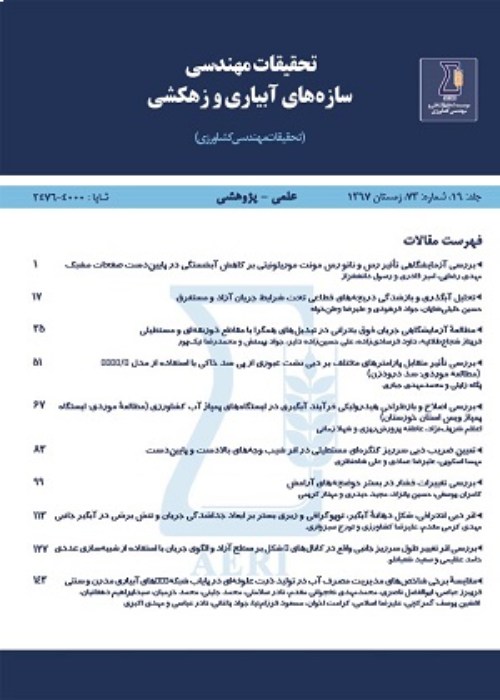Discharge Prediction in Flumes with Trapezoidal Contraction by Machine Learning Techniques
The effective use of water for irrigation requires that flow discharge and flow volume be measured carefully. Venturi flumes are widely-used structures for monitoring flow discharges in canal networks (Venturi tubes used in pipelines). Venturi was the first that observed the effect of a local contraction in a conduit on flow velocity distribution. The Venturi flumes have a local constriction. These devices may be built in different shapes and generally are very accurate when operated under free outflow conditions. Longitudinal section of the Venturi flumes has a constant bottom slope, or the bottom has a local sill or hump. The Venturi flume with an arc-shaped inlet is referred to as Khafagi flume. Montana flume is also a flume without diverging downstream wall. The polygonal-shaped flumes are simpler in construction than curve-shaped flumes and are less expensive due to plan shaped elements. The Parshall flume is characterized by a specific shape with variousdegrees of convergence and divergence. Since development of the Parshall flume in 1926, many studies have been made to simplify, reduce construction costs, increase performance and accuracy of the flumes. A review of the literature of the subject shows that the study of hydraulics in flow measurement flumes is mainly based on laboratory research, and although numerical modeling is of interest, due to the complexity of the geometry of the section and the Contraction of the triangular shape, their accuracy is not reported to be acceptable. On the other hand, researchers have tried to develop and use soft computing models to estimate flow characteristics in such sections due to the hydraulic complexity of these types of flumes, which according to published reports, their accuracy has been suitable in all types of sections. Therefore, in this research, the development of data group classification model, support vector machine (SVM) model and random forest algorithm were developed to estimate the Discharge in flumes with triangular contraction.
By investigating the hydraulics of flow in flumes, researchers have found that the Discharge depends on the width of the contraction at the location of the structure, the horizontal and vertical slopes of the triangular walls, and the relative depth of the flow. Therefore, in the present study, for the development of GMDH, SVM and RF models, five dimensionless input parameters were considered. GMDH algorithm has been widely used in solving various hydraulic engineering problems. One of the most important applications of this method is the estimation of erosion around the bridge base, downstream of the cup-shaped launcher, and the discharge coefficient of flow measurement structures such as overflows. The SVM model is divided into two main groups a) Support Vector Classification model and b) Support Vector Regression model or SVR for short. The support vector machine classification model is used to solve data classification problems that are placed in different classes, and the support vector machine regression model is used to solve forecasting problems.
First, the collected data are divided into two categories, training and testing. It should be noted that the number of collected data is 592, and in this research, 80% of the data was assigned to training and the remaining 20% to testing. The training data is used for calibration and the test data is used for validation. Due to the fact that the collected data do not have a time series nature, they were randomly assigned to each of the training and testing groups. First, the results of the random forest model are presented. The reason for the priority of presenting the results of the random forest model compared to other modes used in this research is the identification of the most important effective parameters in the development process of the random forest model in the modeling and estimation of Discharge.
First, the collected data are divided into two categories, training and testing. It should be noted that the number of collected data is 592, and in this research, 80% of the data was assigned to training and the remaining 20% to testing. The training data is used for calibration and the test data is used for validation. Due to the fact that the collected data do not have a time series nature, they were randomly assigned to each of the training and testing groups. First, the results of the random forest model are presented. The reason for the priority of presenting the results of the random forest model compared to other modes used in this research is the identification of the most important effective parameters in the development process of the random forest model in the modeling and estimation of Discharge.
- حق عضویت دریافتی صرف حمایت از نشریات عضو و نگهداری، تکمیل و توسعه مگیران میشود.
- پرداخت حق اشتراک و دانلود مقالات اجازه بازنشر آن در سایر رسانههای چاپی و دیجیتال را به کاربر نمیدهد.


